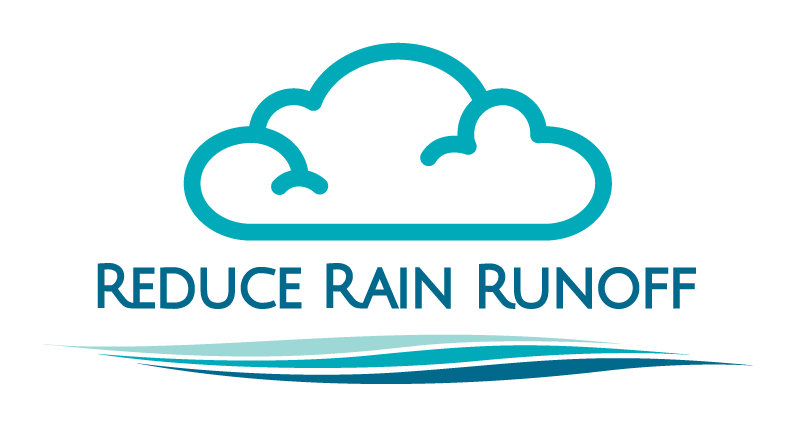
What is Urban Flooding, and Why Should We Care?
Urban flooding occurs when a major rainfall exceeds the soil’s capacity to absorb it, resulting in overwhelmed local stormwater systems. Urban surfaces like roofs and pavement prevent excess stormwater from absorbing into the ground. Increases in development and heavier rains tend to exacerbate runoff issues. Flooded streets, sidewalks, and buildings pose risks to safety, property, and local economies—as does the increase in pollution washed along with the flow during a major storm. The solution to urban flooding requires a little thoughtful planning, harnessing a blend of green stormwater solutions that use nature to absorb water onsite—whether through large-scale urban projects, or smaller-scale rainscaping most of us can create at home.
The Pipes Beneath Us
Underneath our bustling streets and sidewalks lies a network of pipes that form the stormwater drainage system. When rain falls, runoff from hard surfaces like roads and rooftops is swiftly directed into storm drains, then channeled through these pipes before being discharged into nearby streams. Unlike water in the sanitary sewer system, stormwater remains untreated, carrying with it pollutants it picks up along its path, including sediment, litter, fuel residues, and other chemicals.
Traditionally, our built environment has relied on gray infrastructure—storm drains, pipes, and gutters—to manage flooding by directing rain water away as swiftly as possible. However, the sheer volume and velocity of this concentrated stormwater strains local waterways, delivering pollution and increasing erosion in our streams. To reduce those impacts, sustainable solutions that allow water to soak into the ground offer a path forward. Rain barrels, rain gardens, and bioswales are examples of green infrastructure that allow property owners to process even the heaviest runoff onsite, easing the burden on local streams and reducing flood risks during heavy rainfall.

Did You Know?

Every year, millions of gallons of untreated stormwater runoff enter French Broad waterways from regional stormwater systems. In many urban areas, this runoff causes significant flooding as well.
“Flashier” Floods On the Rise
Flash floods occur from heavy rainfall in a short time period, marked by rapidly flowing water, abrupt surges in water levels, and pooling into low-lying areas. Flash flooding is more frequent in urban areas, especially in the mountains, since the additional hard (impervious) surfaces do not allow water to soak into the ground.

As more impervious surfaces are added through development, flash flooding becomes more likely. Additionally, the effects of climate change will contribute to more frequent and intense rain events. To reduce pollution, erosion, and sedimentation of local waterways, we must implement sustainable and resilient solutions to address local flooding.
Did You Know?

According to the Environmental Protection Agency, by the end of the century annual flood damages will increase by $750 million in part due to runoff.
Nature’s Flood Defense
Floodplains are low-lying areas adjacent to rivers and streams that regularly experience flooding during periods of high water flow. They play a vital role in maintaining ecological balance and mitigating the impacts of floods.
Recognizing their importance, most cities are increasingly prioritizing the protection of floodplains as part of their comprehensive climate and flood management strategies. Preserving floodplains helps safeguard communities from the devastating effects of flooding by allowing space for floodwaters to dissipate safely. Building in a floodplain poses risks of damage and displacement during flood events, while disrupting natural floodplain functions. Refraining from construction and placing hazardous materials in floodplains is crucial to mitigating risks and maintaining the resilience of both human communities and natural ecosystems. River parks can be excellent uses of a floodplain, if their installations are designed to “go with the flow” (and minimize hard surfaces).
Did You Know?

According to FEMA, a one-acre undeveloped floodplain can store 1.5 million gallons of water. This capacity for storage is especially important in urban areas.
Greening our Urban Landscape
Riverfront parks situated along the banks of rivers offer significant recreational, environmental, and aesthetic value to urban communities. Their benefits include improved public health and well-being, supporting community engagement, providing habitat for wildlife, and serving as a valuable form of sustainable infrastructure as they mitigate the impacts of flooding.
By creating green spaces capable of absorbing excess water during intense rain events, river parks help minimize damage to surrounding areas. Asheville’s riverfront parks stand as a prime example of these principles in action, demonstrating how design and ecological consciousness can meet the needs of people and the environment. Click here to learn more about the history of Asheville’s Riverfront Parks.

Did You Know?

Natural areas allow 90% or more runoff to soak into the ground. In urbanized areas, only about 50% of runoff infiltrates the ground.
One Drain At A Time
Keeping runoff on site is the best way to reduce its impact on waterways. Yet because storm drains will always be necessary in an urban environment, it’s essential to keep storm drains clear. When storm drains get blocked with trash, leaves, and sediment they can’t effectively redirect runoff from streets and buildings. This can cause localized flooding, as the water is unable to flow freely to the drainage system.
RiverLink’s Adopt-A-Storm Drain program partners with the City of Asheville and local volunteers to help protect water quality and prevent street flooding from clogged drains. Volunteers select a storm drain located conveniently near them and commit to keeping their drain openings clear every two weeks and after each rain event. Presently, this program has volunteers adopting storm drains within the Central Asheville Watershed, Smith Mill Creek Watershed, Reek Creek Watershed, and the Haw Creek Watershed. Click here to learn more about the Adopt-A-Storm Drain program!

Did You Know?

There are over 1,000 storm drains in the Central Asheville watershed alone. Just imagine all the untreated runoff flowing into the drains and from there into our waterways!
Actions You Can Take to Reduce Urban Flooding
Disconnect your Downspout
- Redirecting your downspout to a vegetated area where runoff can soak into the ground is a cost-effective and simple way to reduce runoff. Check out our Guide to Disconnect Your Downspout.
Place a Rain Barrel to Capture and Use Runoff
- Rain barrels are also a great way to collect runoff from your rooftop. Instead of having the downspout connected to the drain, have it flowing into your rain barrel! Check out our Guide to Install a Rain Barrel.
Plant native trees or shrubs along waterways
- Plant native woody plants that are naturally adapted to grow near streams. Some small tree species that grow quickly are silky dogwood (Cornus amomum) and silky willow (Salix sericea). Some taller tree species are river birch (Betula nigra) and yellow buckeye (Aesculus octandra).
Report Stormwater System Issues to Local Government
- Storm drains in the public-right-of way along streets are owned and maintained by local governments or the N.C. Department of Transportation, depending on ownership of the roadway. If you see an issue (flooding, illegal dumping into a storm drain, damaged/clogged storm drain) please notify the appropriate agency:
- City of Asheville Stormwater Services: call 828-232-4567 during normal business hours (7:00am – 5:30pm). After hours, holiday, and weekends, call 828-251-1122.
- Town of Black Mountain: call the Stormwater Helpline 828-419-9300, ext. 680.
- City of Hendersonville: call the Storwamter hotline at 828-697-3013.
- N.C. Department of Transportation: Report a Drainage Issue Here, or call 1-877-DOT-4YOU (1-877-368-4968) weekdays from 8 a.m. to 5 p.m.
Avoid Building Alongside Bodies of Water
- Refrain from placing sheds, garages, and impervious surfaces in the floodplain and other flood-prone areas adjacent to wetlands, streams, and rivers.

How Can You Help?
Ready to learn more? Head over to our Take Action page to learn more about simple ways you can reduce rain runoff at your residence or business.
